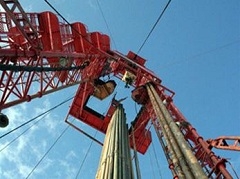- Home page /
- New technologies and equipment /
- TATNEFT Successfully Applies the Technology of Drilling...
TATNEFT Successfully Applies the Technology of Drilling Small Diameter Horizontal Wells
13.07.2012

Technologies of drilling small diameter openhole horizontal wells are successfully implemented at OAO TATNEFT. Drilling of the 4 th well at NGDU Jalilneft is almost completed. One of the small diameter horizontal wells was completed at Ashalchinskoye field of NGDU Nurlatneft, one more at NGDU Almetyevneft, the third one at NGDU Jalilneft.
Drilling of horizontal wells is a promising area since it allows increasing the volumes of crude oil production, improving hydrocarbons recovery ratio and reducing operating and capital expenditures through optimizing the drilling spacing, as well as avoiding an early formation water breakthrough.
The difference between drilling horizontal small diameter wells and traditional horizontal wells lies in the fact that drilling below surface casing to the design well bottom depth is made with one 155.6 mm (6-1/8”) bit diameter and the interval above the producing formation is cased with 114 mm (4-1/2”) pipe string.
During horizontal wells drilling main risks and complications are associated with upper horizons’ deposits characterized by unstable rocks. The Company’s specialists apply modern technologies in order to minimize such risks. These technologies include application of drilling mud with improved properties, drilling of telemetry controlled buildup and wellbore stabilizing sections with application of the same BHA. The BHA integrated telemetry system also includes a drill pipe GR logging module that allows defining the boundaries of Verey and Bashkirian deposits occurrence without interruption of the drilling process for reference logging.
Real-time geosteering information flows through the cell communication channels to computers of the specialists of geological and technological services of NGDU, TatNIPIneft and OOO Tatneft-LeninogorskRemServis Company. This allows prompt controlling of the wellbore trajectory and positioning the horizontal wellbore section within the oil-saturated interval of the Bashkirian Stage, which is confirmed by the analysis of drill cuttings for hydrocarbon content. After reaching the target depth 114 mm (4-1/2”) production casing with a casing packer is run through Verey sediments to preserve reservoir properties of the openhole horizontal section. Cementing the production casing is performed with the rise of cement to the wellhead.
Small diameter wells are constructed with application of smaller rigs; they have less metal consuming design with expenditure of less drilling mud as well as other process fluids and chemicals. Energy consumption saving is also substantial. The savings in the construction of such wells amount to 30-35 percent.

